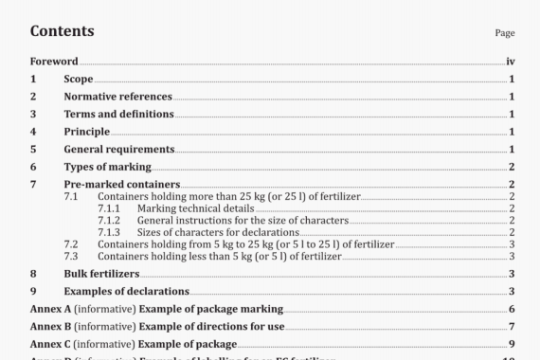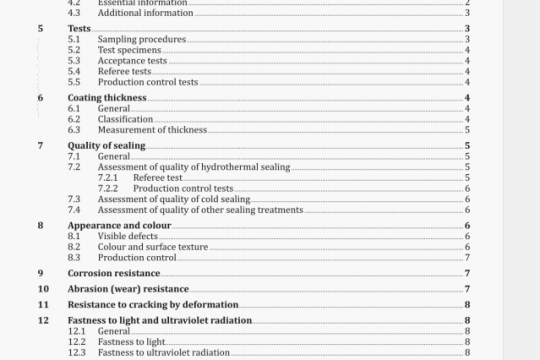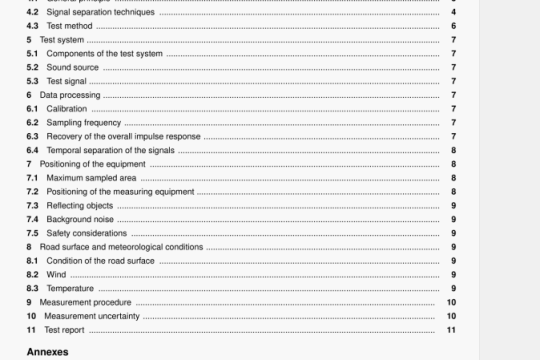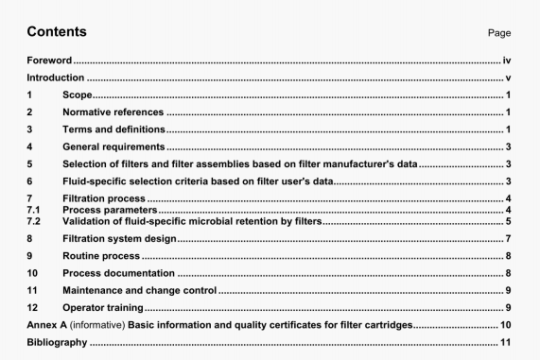ISO 15032:2000 pdf download
ISO 15032:2000 pdf download.Prostheses-Structural testing of hip units.
5.1.2 Complete structure
The complete structure shall comprise the hip unit and at least the following:
a) thigh segment or suitable attachment;
b) any special attachment at the knee; and/or
c) any parts above the hip unit including the socket.
5.1.3 Hip unit
The hip unit shall be attached to suitable attachments to give the same overall dimensions as the complete structure.
The interface of such attachments shall have mechanical characteristics similar to those of the intended adjacent components.
5.2 Responsibilities regarding selection, preparation and alignment of test samples
5.2.1 The manufacturer/submitter shall be responsible for the selection and assembly of the components to be tested, and for the provision of specified parts to be replaced during the cyclic tests.
5.2.2 The manufacturer/submitter shall be responsible for preparing the test submission document complete with alignment and/or service instructions, as necessary.
5.2.3 The manufacturer/submitter shall apply a unique and traceable identification to each test sample.
5.2.4 The load application levers (see 6.2.1) shall be attached by either the manufacturer/submitter or the test laboratory/facility.
5.2.5 The test laboratory/facility shall seek the advice of the manufacturer/submitter if the specific design of hip units incorporates any special characteristics.
5.2.6 The test laboratory/facility shall be responsible for adjustment of the alignment to give the correct offsets and effective lever arms during test.
5.3 Selection of test samples
If appropriate, the prosthetic structures selected for test shall be drawn from standard production. Details of the selection shall be recorded in the test submission document. If the manufacturer/submitter supplies a certificate stating that the test sample has been taken from the normal production, this certificate shall be included in the test submission document, together with details of the sampling method.
5.4 Preparation of test samples
Any cosmetic components shall be omitted from the test sample, unless they contribute to the structural strength.
The test samples shall include all parts normally fitted.
NOTE During the course of the cyclic tests, specified parts are replaced when the number of cycles has reached a value at which such replacement is indicated in accordance with the manufacturer’s/submitter’s service instructions and/or the test submission document.
The test sample including any end fittings shall be assembled in accordance with the responsibilities regarding the preparation of the test sample and the test submission document.
5.5.2.2 Effective knee-joint centre
The effective knee-joint centre shall lie on the effective knee-joint centreline.
For symmetrical knee units, the effective knee-joint centre shall be the point on the effective knee-joint centreline equidistant from the external boundaries of the unit.
For asymmetrical or handed knee units, the position of the effective knee-joint centre shall be established from the manufacturer’s/submitter’s written alignment instructions for the knee unit included in or submitted with the test submission document.
5.5.2.3 Effective hip-joint centreline
For a monocentic hip unit without a lock or stance phase control mechanism, the effective hip-joint centreline shall coincide with the joint flexion axis.
For all other hip units, the effective hip-joint centreline shall be established from the manufacturer’s/submitter’s written alignment instructions included in or submitted with the test submission document.
The effective hip-joint centreline shall lie in the o’- u’-plane of the coordinate system parallel to the o’-axis.
5.5.2.4 Effective hip-joint centre
The effective hip-joint centre shall lie on the effective hip-joint centreline.
For symmetrical hip units, the effective hip-joint centre shall be the point on the effective hip-joint centreline equidistant from the external boundaries of the unit.
For asymmetrical or handed hip units, the position of the effective hip-joint centre shall be established from the manufacturer’s/submitter’s written alignment instructions for the hip unit included in or submitted with the test submission document.
5.5.3 Worst case alignment
The structurally worst alignment position of the test sample shall be defined by the manufacturer/submitter in the test submission document. It shall lie within the limitations of the manufacturer’s/submitter’s written instructions for the alignment of the limb as supplied with every component of the type.




